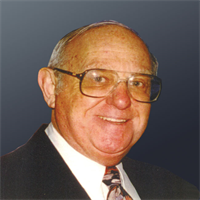Stop Smoking and Save Money
March 1, 2012Comments
A full-page ad in a national weekly magazine stopped me cold. Its headline: Five years after you quit smoking, your risk of stroke is the same as someone who’s never smoked.
What does this have to do with estate planning? Plenty! As an estate planner, my client’s life expectancy is als front and center, a significant consideration in the planning process. This is particularly true when it comes to retirement planning and business succession. Your age, health and smoking (or nonsmoking) habit are the three most-important factors in determining your life expectancy.
Never can a stroke, cancer or a heart attack be anything but bad news. But hallelujah! Survive such an event for 5 yr. and your life expectancy statistically is likely the same as that for the rest of us living in America. Consider this quote from life-insurance consultants The Orchard Group:
“A person who has been cancer- and treatment-free with no recurrences can potentially be insurable at a standard risk classification after 5 years. A person with a prior cardiac incident that is considered stable by their doctor post-treatment also can be potentially insurable at a standard risk classification after 5 years. Both conditions will be dependent on the age of onset of the cancer or cardiac incident.”
“Standard risk classification” is a rating used by life insurance companies to determine premium costs, and means your life expectancy is the same on average as other Americans the same age and sex.
Life insurance plays an important role in most estate plans. But let me say it loud and clear: No life-insurance company wants your money if it doesn’t think you are going to live. The sad fact is that most people (worse yet, their professional advisors) don’t have a clue that the wonderful 5-yr. rule even exists. We use the rule regularly in our estate-planning practice to enhance the wealth of each client who qualifies, without losing a penny to the IRS. Here are two examples.
Case study 1: Second-to-die coverage (two lives insured)
Joe, age 58, is a cancer survivor (free of the disease for 8 yr.) and married to Mary (2 months younger than Joe). They needed $2 million of insurance coverage for estate-tax purposes. Since no estate tax is due until the second death of a husband and wife, second-to-die is the perfect choice. Best of all, it costs less than single coverage ($18,200 per million dollars of insurance for Joe, and $16,210 for Mary, who is also a standard risk). Second-to-die, on the other hand, only cost $10,202 per million (only available because Joe now is insurable). Of course, they bought $2 million of second-to-die coverage.









